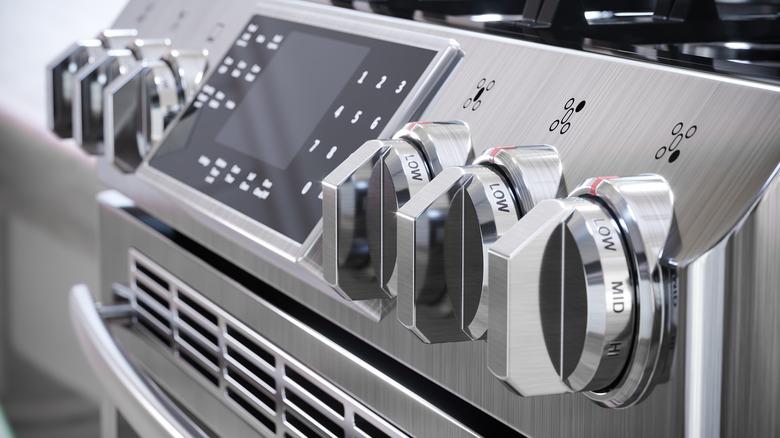How To Get Burn Marks Out Of A Stainless Steel Stove
Burn marks on stainless steel are common when cooking. But burn marks and food stains can be easily removed with several different kinds of stainless steel cleaners.
Stainless steel is a sensitive material, though, so always read your owner manual before cleaning to avoid damaging the surface. The manual will list what products are safe to use to clean a stainless cooktop.
Precautions to Take
Some stainless steel appliances have a clear-coat finish. Certain cleaning products can strip or damage the finish, so avoid cleaning products that are not compatible with stainless steel or are abrasive. Do not use oven cleaners on stainless steel.
You also want to avoid using chlorine bleach or any cleaning product that contains chloride. This can damage the finish of the stainless steel. Don't use abrasive cleansers on brushed stainless steel because it can cause scratching. Stay away from steel brushes, steel wool, or abrasive scrubbing pads, because these can harm the surface and make the stainless steel look worn.
Look closely to see if the stainless steel grain is running vertically or horizontally. Similar to wood, cleaning with the grain gets the best results and is gentle on the appliance, so scrub into the grain to prevent scratches.
Soap and Water as a Stainless Steel Cleaner
For stuck on stains, especially burned pot marks, wash with hot water and mild liquid dish soap. How To Clean Stuff recommends nylon scrubbers because they offer the perfect amount of abrasion for scrubbing but are gentle enough to use on stainless steel.
Rinse off the soap and towel dry to avoid leaving water marks or streaks. This may be enough to remove most stains.
Vinegar and Oil
A DIY vinegar and oil cleanser can help remove stains, including hard water marks and fingerprints. Clean frequently with vinegar and oil to avoid stains building up.
Start with vinegar and oil to see if this removes burn marks on stainless steel. Use microfiber cloths because they are nonabrasive and can be washed and reused. But only use this method if your stove does not have an oleophobic finish. Your manual will provide this information. If the burn marks do not come out with vinegar and oil, then you can use baking soda paste for more stubborn stains.
Baking Soda Paste
You can make a homemade baking soda paste that works great on difficult to remove stains like burn marks or caked on food and grease. Bob Vila suggests combine liquid dish soap with baking soda and mix to make a paste-like consistency. Allow the paste to set in on the stain for a few minutes. Next, gently scrub the paste into the grain using a nylon cleaning tool or an old toothbrush. These provide enough friction without being too abrasive, and can remove issues like discoloration of stainless steel due to heat.
Make It Shine
You can buy polish to help restore the shine to your stainless steel. Apply the polish, wiping in the direction of the grain, using a lint-free cloth. Next, buff and dry the stove with a clean lint-free cloth. If you want to use an all natural homemade option, buff the stove with food-grade lemon oil or mineral oil. Lemon oil leaves your kitchen with a lingering fresh scent.
Burn marks from pots, pans and kettles can be removed with a variety of cleaning products, many of which are all natural and homemade. Your stainless steel stove can be restored easily to its streak-free, sparkly shine.
